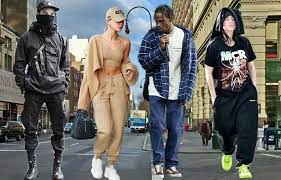From the Streets to the Runway: How Streetwear Took Over Fashion
Fashion has always been a reflection of the times. It evolves and adapts to the cultural shifts and societal changes happening around us. One of the most prominent evolutions in the world of fashion has been the rise of streetwear, a style that originated from the streets and has now taken over the runways.
Streetwear, as the name suggests, was born in the urban streets, particularly in the marginalized communities of New York City in the 1970s and 80s. It was an expression of individuality and rebellion against the mainstream fashion industry. What started as a subculture among the youth quickly transformed into a global phenomenon.
Streetwear is characterized by casual, comfortable clothing inspired by skateboarding, hip-hop, and various urban lifestyle elements. It often incorporates graphic t-shirts, hoodies, sneakers, baggy pants, and accessories like beanies and baseball caps. The style was popularized by the youth and influenced by the music they listened to, the sports they played, and the graffiti they were surrounded by.

Although streetwear began in the streets, it didn’t take long for it to make its way into mainstream fashion. The 90s witnessed the emergence of streetwear brands like Stüssy, Supreme, and A Bathing Ape, which introduced this style to a wider audience. Celebrities like Kanye West and Pharrell Williams became ambassadors for the streetwear culture, further fueling its popularity.
So, what exactly propelled streetwear from the streets to the runway? One major factor was the shifting attitudes towards luxury and exclusivity. Traditionally, high fashion brands were associated with sophistication and elegance, catering to a wealthier and older clientele. However, millennials and Gen Z started gravitating towards streetwear due to its authenticity and the sense of community it offered.
Streetwear brands embraced a more inclusive approach, collaborating with artists, musicians, and even fast-food chains. This opened up new avenues for self-expression and made luxury fashion more approachable to the younger generation. Gradually, luxury houses like Louis Vuitton, Gucci, and Balenciaga started incorporating streetwear elements into their collections and collaborating with streetwear brands, bridging the gap between high fashion and street style.
Social media platforms like Instagram also played a major role in the skyrocketing popularity of streetwear. The rise of influencers and street style photographers made it easier for people to discover new trends and connect with like-minded individuals. Streetwear, with its bold colors and unique designs, became highly Instagrammable, further amplifying its appeal and spreading the culture globally.
Streetwear’s fusion with luxury fashion also sparked a new demand for limited edition collaborations and exclusive drops. Brands started releasing highly sought-after collections in limited quantities, creating a sense of urgency and scarcity. This scarcity marketing strategy made streetwear items extremely coveted, driving up their resale value and turning them into collector’s items.
In recent years, streetwear has reached new heights of prominence, not only in fashion but also in pop culture. Streetwear brands now collaborate with artists, hip-hop artists, and sports icons, blurring the lines between fashion, music, and sports. Streetwear has become a symbol of authenticity, individuality, and self-expression, resonating with a diverse range of people across the world.
As streetwear continues to dominate the fashion landscape, its influence can be seen in the creativity and innovation of contemporary fashion. Designers are constantly experimenting with streetwear elements, pushing the boundaries of traditional fashion norms. Runway shows now feature hoodies, sneakers, and oversized silhouettes, challenging the notion of what is considered “high fashion.”
From Gym to Street: Unveiling the Trendy Athleisure Phenomenon
Streetwear’s journey from the streets to the runway is a testament to the power of youth culture, social media, and the changing perceptions of luxury. It has shown that fashion no longer solely resides within the confines of the elite; it is accessible to anyone with a sense of style and a desire for self-expression. The rise of streetwear has brought diversity, inclusivity, and a sense of rebellion to an industry known for its exclusivity, forever changing the way we view fashion.

